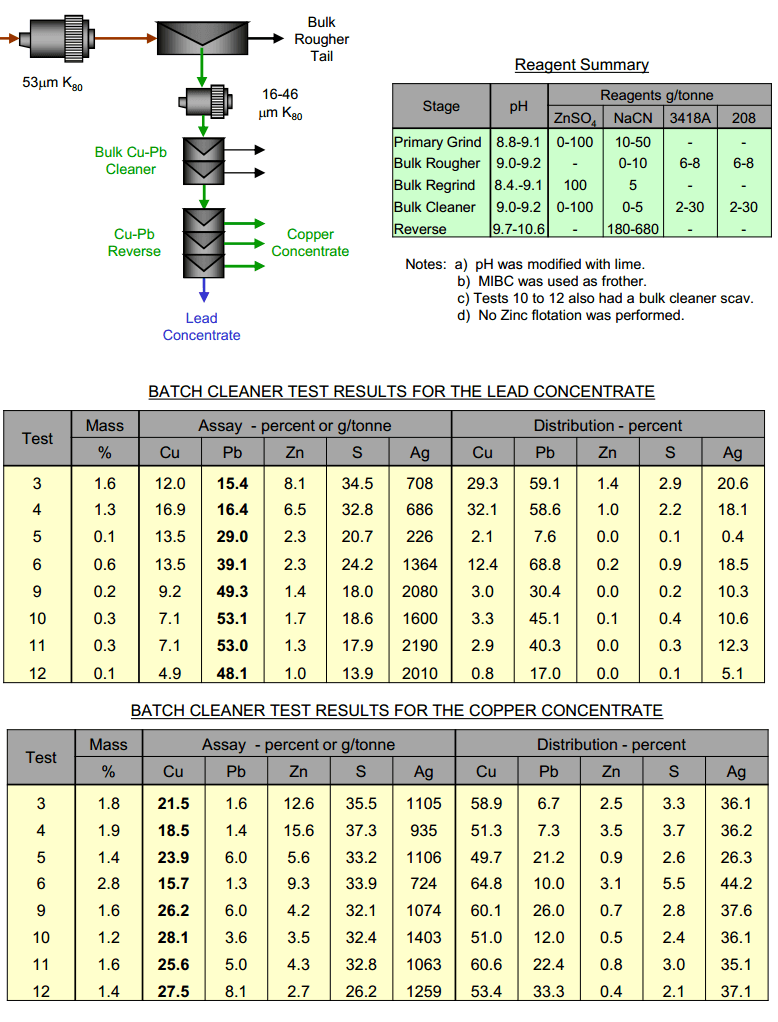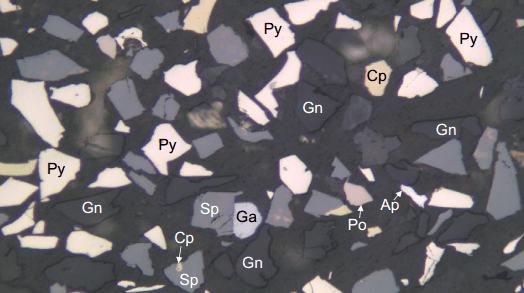
How you separate Pb from Cu depends on how much of each metal is present. You best depress the metal that’s the most present, the metal you have the most of & you float the metal you have the least of. In this case, flotation of a small amount of lead from the copper concentrate would maximize copper recovery, while removing enough lead to make the copper concentrate more marketable. It also allows the opportunity to produce a higher grade lead concentrate.
To achieve this copper/lead separation, bulk flotation is performed with depressants to control sphalerite and pyrite. Cyanide was used in the bulk rougher as it will also be used in the reverse. Rougher testing indicated that 10 to 50 g/tonne cyanide in the bulk rougher was sufficient. The bulk concentrate was then subjected to relatively high cyanide levels to depress the copper minerals. Cyanide dosages in the reverse circuit ranged from 180 to 680 g/tonne of feed. The metallurgical results are shown in the tables by concentrate.
Tests 3 to 5 were conducted with progressive finer regrind sizes. Rejection of zinc and sulphur (pyrite) was poor at the coarser regrind sizes. The regrind size of 15 to 20um K80 appeared to be most effective and was supported by the mineralogical data for this sample.
With collector and depressant optimization, Tests 9 through 11 produced the best Flotation results. For those tests, lead was 39% recovered from the feed to a concentrate grading 52% Pb. Copper recovery to this concentrate was only 3%.
For the same three tests, copper was 57% recovered from the feed into a concentrate grading 27% Cu. The average lead grade was 5%. Copper recovery was low in the batch test as there was significant copper remaining in the bulk Flotation cleaner tailings.


